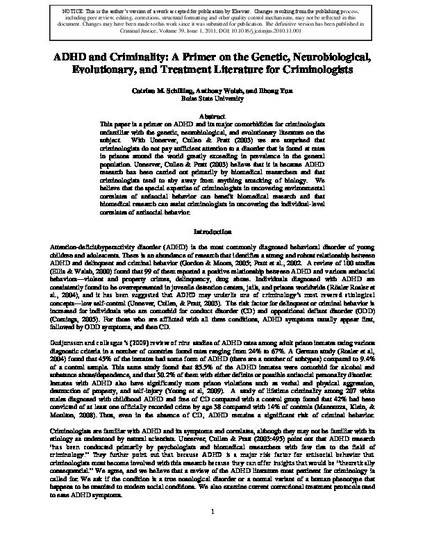
This paper is a primer on ADHD and its major comorbidities for criminologists unfamiliar with the genetic, neurobiological, and evolutionary literature on the subject. With Unnerver, Cullen & Pratt (2003) we are surprised that criminologists do not pay sufficient attention to a disorder that is found at rates in prisons around the world greatly exceeding in prevalence in the general population. Unnerver, Cullen & Pratt (2003) believe that it is because ADHD research has been carried out primarily by biomedical researchers and that criminologists tend to shy away from anything smacking of biology. We believe that the special expertise of criminologists in uncovering environmental correlates of antisocial behavior can benefit biomedical research and that biomedical research can assist criminologists in uncovering the individual-level correlates of antisocial behavior.
This is an author-produced, peer-reviewed version of this article. © 2009, Elsevier. Licensed under the Creative Commons Attribution-NonCommercial-NoDerivatives 4.0 International License (https://creativecommons.org/licenses/by-nc-nd/4.0/). The final, definitive version of this document can be found online at Journal of Criminal Justice , doi: 10.1016/j.jcrimjus.2010.11.001
Available at: http://works.bepress.com/anthony_walsh/1/
